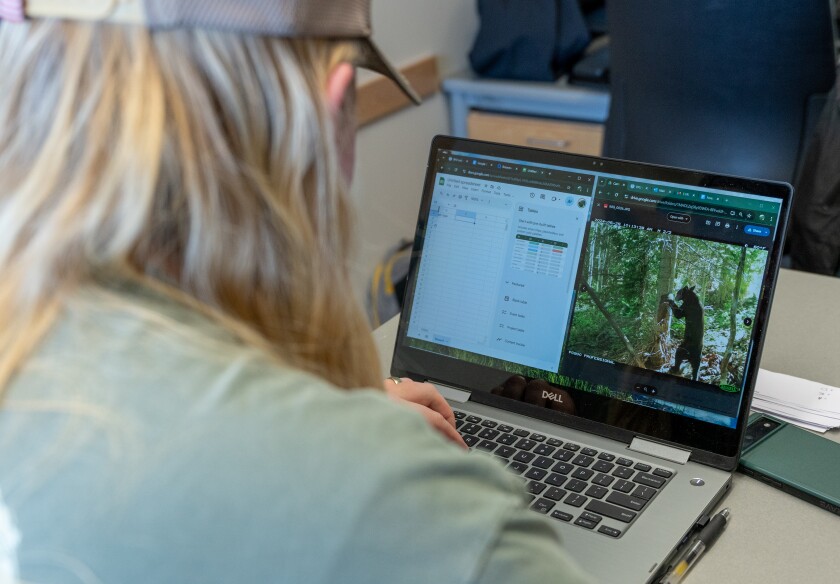
A lot of misinformation surrounds the bear-human conflict. Professor Tom Smith from the Department of Plant and Wildlife Sciences has heard it all. Folkloric-type ideas like wearing a purple hat to scare away bears or raise your arms to look big are not grounded in scientific fact. When wrong, they can lead to disaster for humans and bears alike. In his lab, Smith and his students uncover the facts about bear attacks using science to prepare for and prevent them.
Smith and his students have compiled a database of all the bear-human conflicts that have occurred over the past several decades. They also collaborated with geospatial mapping in the library to create a website. This compilation is useful when visiting national parks and when wanting to see what bear-human conflicts have happened and what bear species are most prevalent. With ongoing bear-human conflicts, the lab is constantly compiling new data.
Smith’s students are also working on a paper that lists all bear attacks where dogs were accompanying their owners. In some cases, the dogs helped their owners; in others, they fled or just watched. The paper serves as credible research for American and Canadian national parks deciding on pet policies.

In conjunction with the Hogle Zoo, Smith’s lab is measuring the bioenergetic capabilities of bear teeth and claws with 3D-printed metal claws that mimic the destruction wrought by bears on objects at the zoo. The College of Engineering helps simulate the strength of an actual bear using a hydraulic press. Smith and students then document that damage using microscopes. This data will be used to inform the zoo and other companies about the durability of their products and effective deterring methods.
Another key goal of Smith’s lab is to experiment with preventative measures that keep bears out of pedestrian areas. These tactics include creating sprays armed with smells that annoy bears or lure them to other locations. Scents like like skunk and citronella (an intense citrus scent), and other chemicals are tested for their potency. Affectionately nicknamed “stink central,” these smells are then used in the field to see if they are effective at drawing bears away from human trails. These different odors are needed because standard bear repellent is full of chemicals that are illegal in some countries. “If we can attract carnivores with something that's not rotting cow or some other nasty thing,” said Smith, “then we can probably be more effective in our way of sensing them and attracting them.”

One student in Smith’s lab, Erin Jacoway (PWS ’25), is grateful she expanded her experience. “Doing research with animals is very different from doing research with plants,” Jacoway said. “Plants just do their thing, and then you can write facts whereas animals are different. I didn't really realize that until I started this lab.”
Fern Luttrell (PWS ’25), another student in Smith’s lab, is grateful that Smith encouraged her to participate in the data collection and paper writing. “Tom is especially and uniquely good at accepting input,” said Luttrell "Tom is so willing to be personable and communicative and accept our input. He is excited about our progression.”
Smith focuses on strengthening and sharing his students’ testimonies. “When we look at creatures and their complexity,” reflected Smith, “I remind my students that this is the work of an eternal being. When you see complex organisms, don't discredit God. God can make very complex things. We try to keep those conversations alive. We don’t do that by ignoring those facts but embracing them.”
The work of studying bear-human conflict is ever-changing. To get involved with Dr. Smith’s lab, you can email him at tom_smith@byu.edu.
10 students
A student would be a good fit for this lab if they:
Are interested in bears
Students learn the following skills working in the lab:
- Data collection, management, and analysis
- Excel and statistical software
- Field techniques like ATV operation
- Bear handling (depending on the project)
- Wilderness first aid